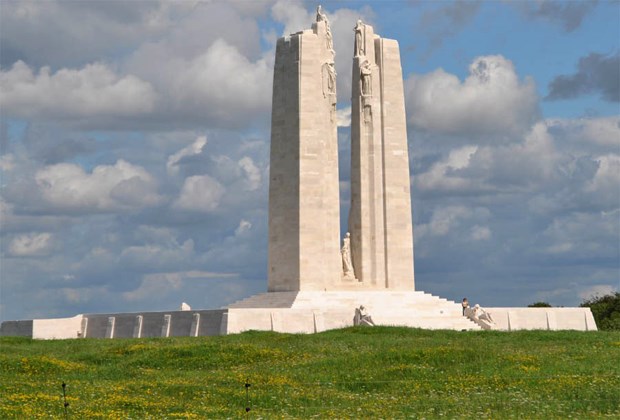I am reminiscing back to a wonderful holiday in England in 1992. After driving our rented motorhome some 1,900 miles up one side of England and down the other, we went to visit my lifelong friend, Jill, and her husband John, who lived in Uckfield, Sussex.
As the weather was fine, Jill suggested we take a trip to France. Both Jill and John knew of my interest in recent history and, in particular, the battles that took place in France during both World Wars. My father’s youngest brother, Maurice Chevrier Lalonde, was killed in France on April 6, 1916.
Although my dad had lived many years in England, I don’t recall him saying he had ever paid his respects at his beloved young brother’s grave in Rochlincourt, near Arras. I meant to correct that and visit his gravesite to pay my respects.
John and Jill visit France frequently to shop, stock up their wine cellar and site-see. However, this trip was more for Joyce and I to visit both new and historical places.
We began by driving to Folkstone, where we caught the hovercraft Princess Margaret to Boulogne. After a speedy, but noisy, 25-minute ride on this monster machine, we drove out into the sunshine and onto the concrete slipway at Boulogne. On the way to Dieppe, we passed several pill-boxes, souvenirs from the Second World War, overlooking the roadway.
We stayed the first night in France at a lovely sea-front hotel in Dieppe overlooking the beach.
It was here that some 6,000, mostly Canadian soldiers, attempted to carry out Operation Jubilee on Aug. 19, 1942. History shows that this wartime fiasco ended with 3,623 killed, captured or wounded. In tribute to those Canadians who died in that tragic raid, the French have erected a large granite memorial shaped and coloured like a Canadian flag. It’s built into the cliff face at the end of the Dieppe sea-front promenade.
The next day, we visited the Vimy Ridge Memorial, located about 12 km northeast of Arras.
The battle for this ridge took place from April 9 - 12, 1917. My uncle, and his machine gun crew of four, survived Passchendaele but were killed in another battle for the town of Arras.
The monument consists of a massive concrete base, weighing in at more than 11,000 tons. It supports two pylons of carved sandstone that reach 27 meters skyward. This giant memorial is a silent tribute to 11,285 soldiers, part of the 100,000 who made up the Canadian Expeditionary Force. These 11,000-plus had no final resting place at the time, so each of their names was carved on the walls of the huge granite epitaph. The main inscription reads: “To the Valour of their Countrymen in the Great War, and their memory of their 60,000 dead. This monument is raised by the people of Canada.”
The 250-hectare site was gifted to Canada by France for the memorial. The monument took 11 years to complete, from 1925 to 1936. Its shear size is almost impossible to appreciate. The tallest figure representing peace, and, looking over the Doual Plain, reaches 110 metres. It is the tallest of 20 sculptured figures on the memorial.
During the ground preparation for this edifice, hundreds of unexploded munitions were carefully dug up and disposed of to make room for the roadways to and around the memorial.
Nearby, the carefully preserved network of enemy trenches and tunnels have been opened for display. However, much of the grassy spaces are well signed with: “Do Not Enter Live Munitions.” All visitors are asked to stay on the paths. From time to time, the odd unexploded shell or other live munitions works its way to the surface and is carefully removed.
I sat quietly staring at the monument trying to appreciate the message this memorial represents. I cast my eyes toward the 50 or 60-year-old trees that have grown up among the trenches since those terrible three days. It was a time when the noise of battle must have been deafening as it mixed with the screams of the wounded and dying.
Now, all is silent, deathly silent. The quiet is unspoiled.
Young, green trees and lush green grass that we cannot venture upon, provide a gentle softness to this one-time battlefield. Now, all is peaceful. Those who were lost in the name of peace will be remembered for all time.
I feel I have added my respect for their ultimate sacrifice. It’s strangely silent, and still, a place of peace and quiet now, a place where no birds fly.



